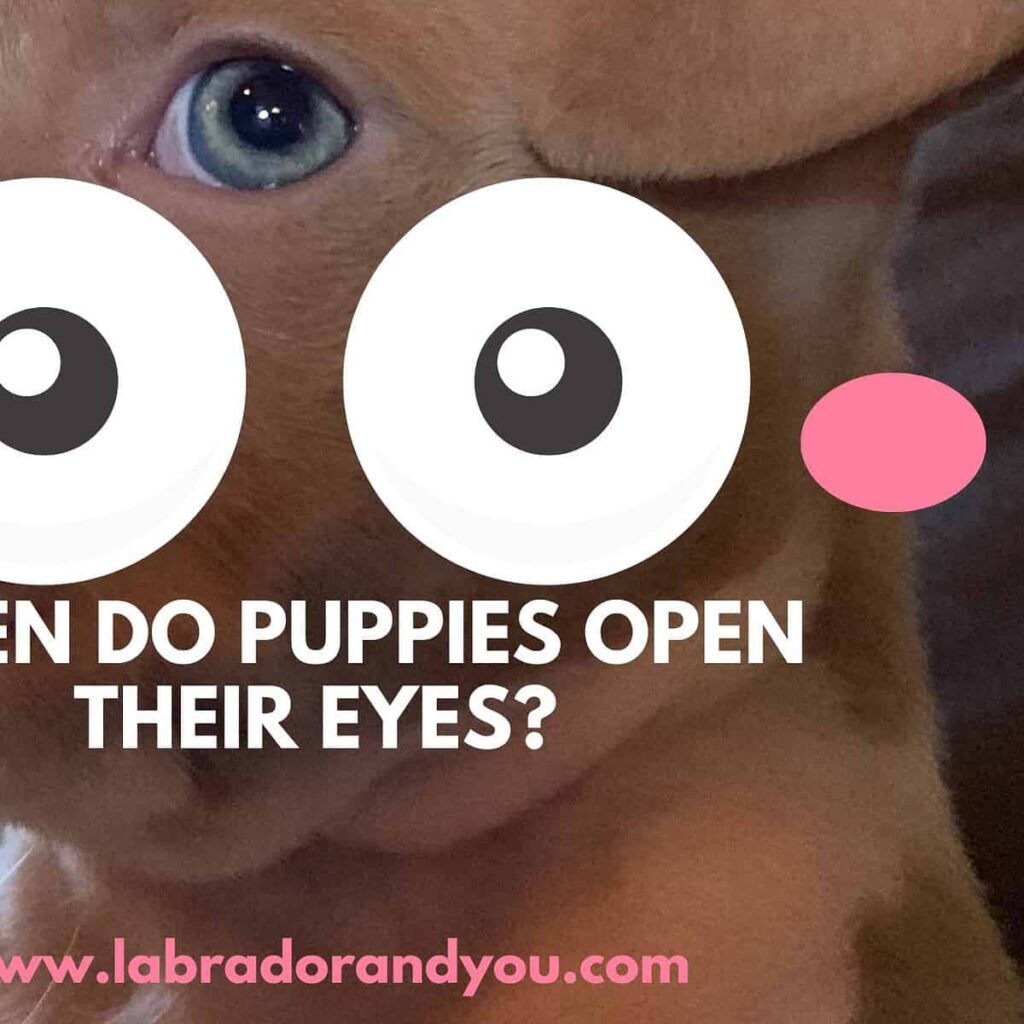No two yellow labs can ever give birth to black puppies. Due to the absence of the big E gene responsible for masking. From classic black to chocolate labrador, these dogs make amazing companions. But can yellow labs have black puppies? No. Today we’ll explore the genetics behind Labrador coat colors and answer your pressing questions.
Labrador Retriever Coat Colors
Basic Coat Colors Of Labradors
Labrador Retrievers come in three basic coat colors: black, chocolate (brown), and yellow. Black Labs are the most common variation making up over 70% of all registered Labs. Chocolate and yellow Labradors may be rarer than their black counterparts.
The coat color of Labradors is determined genetically. Two genes control coat color in Labrador Retrievers; one for pigment intensity (the E gene) and another for whether or not there is any pigment (the B gene). The combination of these two genes creates variations within each coat color.
For example, a Lab with BB genes (no brown pigment) will always be either black or yellow regardless of the other alleles it carries for its E gene.
Genetics Of Coat Colors
The inheritance of these colors in Labradors is determined by a series of genes that influence pigmentation. One key gene responsible for the expression of yellow Labrador puppies is melanocortin 1 receptor (MC1R). It also determines their fur color to be black and chocolate or brown.
The dominance of the black color trait in Labradors means that a dog only needs one copy of the dominant B gene to produce black fur. However, since both chocolate and yellow coat colors are recessive traits, two copies of each different gene are needed to express those traits.
Hence, breeding two yellow labs produces only yellow puppies. Let’s examine the pedigrees and look at specific combinations of genes related to eumelanin (black) and phaeomelanin (red).

Dominance Of Black Color
Black is the most dominant color in Labrador retrievers, and it is caused by the expression of two dominant genes “B” and “B.” When a black Labrador mates with any other colored Labrador, there’s a high probability that their offspring will be black.
Despite its dominance over other colors, the black coat color in Labradors also has some disadvantages. Black Labs are more prone to skin conditions like allergies because they produce more melanin than yellow or chocolate Labs. Also, they tend to overheat quickly during hot weather because their darker fur absorbs more heat.
Creation Of Yellow Puppies
Yellow Labradors were created through a combination of genetics and selective breeding. In the early days, black was the dominant color preferred by breeders. However, some dogs carrying a “yellow gene” produced puppies with lighter coats.
Over time, these yellow Labradors became popular and were bred selectively to create vibrant yellow pups. Labrador coat colors are determined by genes that control pigment production in hair follicles. The recessive e gene creates yellow or chocolate fur.
Different Ways To Get Black Labradors
There are several ways to get a black Labrador, including mating two black Labs, and crossing black Labs with chocolate and yellow Labs.
Mating Black Labradors
Breeding two black Labradors will likely result in the same color puppies. This is because the black coat color in Labradors is dominant.
If a dog inherits the “B” gene from either parent, it will have a black coat. However, even if both parents are black, they may carry genes for other colors and can produce yellow or chocolate puppies.
Both black dogs must carry recessive genes for these colors to get chocolate or yellow puppies. The “bb” genotype determines the chocolate color, while yellow Labradors have the “ee” genotype.
If both parents carry one copy of the recessive gene for each color (i.e., BbEe), there’s a chance their offspring may inherit copies of both genes and show up with brown or yellow fur.

Crossing Black Labradors With Chocolate And A Yellow Lab
When mating a black Labrador with a chocolate dog, puppies inherit the Bb gene for black and the bb gene for brown from their parents. They will have predominantly black or brown coats.
When the recessive b gene combines with the e allele in Yellow Labs or bb genotype in Chocolate dogs’ coats, it reduces eumelanin production from being modified into phaeomelanin (the red/yellow pigment)
The result leads to shiny pitch-black coats or any shade of Eumelanin, depending on each parent’s genetic code. Meanwhile, crossing a black Labrador with a yellow Lab can produce various outcomes.
If both dogs carry the big E gene (EE or Ee), their offspring will be black because it is dominant. However, if one parent carries only the little e gene (ee) that allows for yellow fur, about half of their litter should be yellow, while another half can have dark-colored hair due to one big E gene.
Potential Outcomes Of Mating Different Colored Labradors
What if you mate a white Lab and a yellow Lab? Read on to discover the possibilities of Labrador coat colors.
Two Yellow Labradors
When two yellow Labradors are mated, their offspring will always be yellow. This is due to the epistatic gene ee dominating over other possible coat colors. However, not all yellow Labradors have the same shade of fur.
Breeding two yellow Labs can result in several shades of yellow – from light cream to dark golden. This variation depends on their genotype combination, which determines the intensity and depth of their coat color.
In general, breeding purebred Labradors with similar genetic codes often results in a more predictable outcome regarding coat coloration.

Two Chocolate Labradors for Chocolate Puppies
Breeding two chocolate Labradors can result in all chocolate puppies. This is because both parents carry the recessive gene for chocolate coat color (bb).
However, if one of the parents carries a dominant B gene for black coat color and pairs with the recessive b gene from the other parent, there may be some black puppies in the litter.
Two Black Labradors
When two black Labradors are bred, the puppies will also be black. The dominant gene for coat color in Labradors is black (big B).
If both parents carry this gene, their offspring will inherit it too. However, there is a possibility that some might carry hidden genes for colors like yellow or chocolate.
Breeding two purebred black Labradors is a common practice among breeders to maintain and produce high-quality black Labrador puppies. The resulting litter will have a solid black coat with varying shades of brown eyes, which turn golden as they age.
Though these dogs may look identical, their genetic makeup differs depending on whether they carry dominant or recessive genes for traits such as coat length, personality traits, or health issues like hip dysplasia.
White And Yellow Labrador
White and yellow Labs can produce black puppies, but it is rare. The genes responsible for the yellow coat color in Labradors are recessive, while black is dominant.
When two dogs with the ee genotype (recessive gene for yellow) mate, there’s a chance they will pass on the dominant B gene to create black puppies.
Mating a white Labrador with a yellow one may result in some of their pups being born with black coats. It all comes down to genetics since the B allele pair is necessary to create black fur.
All Three Colors From Two Black Dogs
Breeding two black Labradors can produce puppies in all three recognized colors – black, chocolate, and yellow. The genes responsible for coat color inheritance are complex and involve multiple gene combinations.
For example, a black Labrador carrying recessive yellow genes can pass them on to their offspring, to produce yellow puppies. By carefully considering the parent’s genetic code and understanding coat color inheritance, breeders can predict outcomes by producing healthy purebred Labradors.
Rare Labrador colors such as silver exist, but major kennel clubs like AKC or UK Kennel Club do not recognize them.

Rare Labrador Colors
Apart from the basic coat colors of Labradors, rare variations also exist. These include silver, charcoal, and champagne colors. Silver Labradors, for example, have a striking silver coat caused by a gene variation. However, this color is controversial as it is often linked to health issues.
White Lab And Yellow Lab Producing Black Puppies
It is possible for a white lab and a yellow lab to produce black puppies. The color of the puppy’s coat depends on the genetic code they inherit from their parents. While the dominant gene for labs is black, recessive genes can cause variations in offspring.
If both parents have the recessive gene for a black coat, there is a 25% chance that their puppies will be born with a striking silver or charcoal-colored coat.
This can be even brown or black puppies on rare occasions. Breeding must be done responsibly to ensure a healthy litter. Always consult expert breeders for canine reproduction.
Can Puppies Get Their Colors From Mom Or Dad?
The color of a Labrador puppy is determined by the genetic code inherited from its parents. They can get their colors from both mom and dad.
Inheritance Of Coat Colors
The B (black) gene is dominant over the b (chocolate) gene, which is recessive. If a Lab inherits a B gene from either parent, it will have black fur. If both parents carry the recessive b gene, their puppies may inherit two copies of this gene and develop chocolate-colored fur.
Predict The Coat Colors: Nine Possible Labrador Genotypes
Understanding the possible genotypes can help breeders predict the coat color of puppies. Nine possible genotypes result in different coat colors.
They are black (BBEE, BBEe, BBee), chocolate (bbEE, bbEe, bbee), and yellow (BbEE, BbEe, Bbee). Combining two Labrador parents’ genes will determine their offspring’s potential range of coat colors.
Breeders can ensure desirable traits such as health or temperament by calculating potential puppy genotypes based on gene frequencies.
Looking At The Pedigree
Another helpful is looking at their pedigree. A pedigree is a chart showing the genetic relationships between dogs in their lineage.
It goes back several generations and includes information on each dog’s ancestry and breeding records. Looking at the pedigree can provide valuable insights into a puppy’s potential coat color while also highlighting any potential health concerns or genetic issues.
FAQ
Is It Possible To Get All Three Colors From Two Black Dogs?
Yes, getting all three colors of Labrador coats from two black dogs is possible. However, the chances are low because black Labradors carry dominant genes for their coat color. If both parent dogs have recessive genes for yellow and chocolate, they can produce offspring with any of the three coat colors.
For instance, if both parents had one copy each of the B (black), E (allows expression of pigment), and either b (chocolate) or e (yellow) genes, then there’s a 25% chance that they will have each color represented in their litter – one yellow puppy, one chocolate puppy, and two black puppies.
Are there any health concerns associated with breeding two different-colored labs?
Breeding two different colored labs do not necessarily cause health issues. But it’s crucial to ensure that both parent dogs undergo genetic testing before being bred together.
What Color Labrador Is Rare?
Some Labs have a striking silver coat. Some breeders focus on producing white Labradors, which is not an officially recognized color but are highly sought after.
Can Two White Dogs Make Black Puppies?
The short answer is yes, it’s possible. However, the likelihood of white Labradors having a recessive gene for black coat color is quite low. They will most likely produce only yellow or cream-colored offspring.
How Can I Tell If My Lab Puppy Is Mixed?
One way to tell if your lab puppy is mixed is by looking at its physical characteristics, such as the shape and size of its head, body, and limbs. Purebred labs typically have similar features with little variation.
Another way to determine if your lab puppy is mixed or purebred is through genetic testing. This can be done through DNA tests that analyze the dog’s genes and compare them with established breed standards for Labradors. The test results will show the breeds in the dog’s ancestry.
How Can You Tell A Good Quality Labrador Puppy?
- Firstly, ensure the breeder has conducted all necessary health clearances and provides documentation for the parents’ genetic testing.
- Secondly, observe the puppies’ behavior and temperament to ensure they have been socialized properly from an early age.
- Thirdly, their physical appearance. Check for a shiny coat, bright eyes, and clean ears – signs that indicate they are healthy and well-cared for.
Reputable breeders will not sell puppies younger than 8 weeks old as it can negatively impact their development and socialization skills.
Author Profile
- Site Owner And Dog Lover
-
Aritra, the founder of Labradorandyou.com, is a lifelong dog lover whose passion ignited for Labradors for their loyalty and intelligence. With extensive research and personal experiences, Aritra has become a Labrador expert, offering a rich resource on the breed. Labradorandyou.com provides reliable, timely, and evidence-based information, including Labrador-specific product reviews, training techniques, and care tips.
Labradorandyou.com was born out of Aritra's passion and his desire to share his profound knowledge about the breed. The site serves as a comprehensive resource, offering a wealth of up-to-date information for Labrador owners and enthusiasts alike
Also by the author
-
 Lab-TypesNovember 17, 2023Old Dog Seizures: Causes, Symptoms, and Treatment Options
Lab-TypesNovember 17, 2023Old Dog Seizures: Causes, Symptoms, and Treatment Options
-
 Lab-TypesNovember 17, 2023Why Is My Dogs Poop Yellow? 8 Reasons & Solutions
Lab-TypesNovember 17, 2023Why Is My Dogs Poop Yellow? 8 Reasons & Solutions
-
 ReviewsNovember 17, 2023The Only Hill’s Science Diet Review You Need To Read
ReviewsNovember 17, 2023The Only Hill’s Science Diet Review You Need To Read
-
 Lab-TypesNovember 17, 2023How To Adopt An Emotional Support Dog?
Lab-TypesNovember 17, 2023How To Adopt An Emotional Support Dog?





